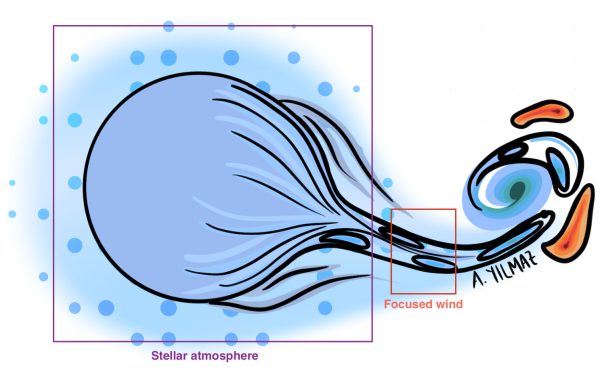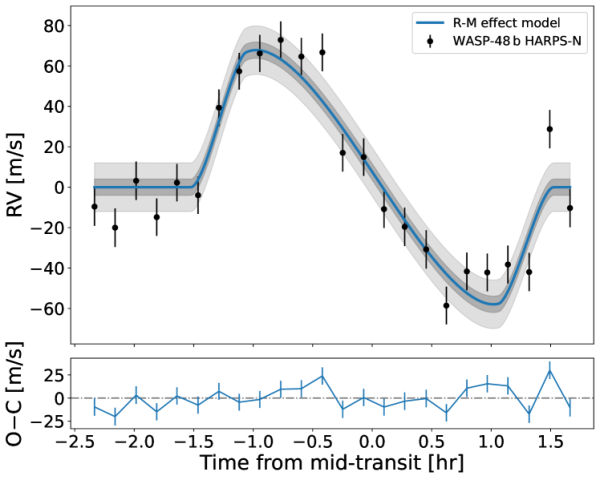Cygnus X-1 is one of the most famous X-ray binaries in our Galaxy. This system consists of a massive blue supergiant and an invisible companion that is thought to be a black hole. The binary has been monitored for a long time by a number of instruments. Maïmouna Brigitte of ASU’s Department of Galaxies, in collaboration with colleagues from other Czech institutions including ASU’s Stellar Department, studied the various components of the accreting system using a new set of observations in both the optical and X-ray regions of the spectrum. Among other, optical data taken with the 2-m Perk telescope in Ondřejov were used in this work.
Abstract
In high-mass X-ray binaries (HMXBs), the compact object accretes the strong stellar wind of an O-B supergiant companion star. X-ray flux variations alter the stellar wind’s ionization state and optical line profiles, which are key in the determination of the orbital parameters of the system. Using the method of Fourier Disentangling, we decomposed the spectral contributions from the stellar atmosphere close to the photosphere and the accreted stream of matter (i.e. the focused wind). High-resolution optical spectroscopy of Cyg X-1 in its hard and soft-intermediate X-ray states revealed state-dependent variability in the line profiles. In both states, we detect H-alpha and He II in both the focused wind and the stellar photosphere, whereas He I is not detected in the focused wind. Additionally, we observe an X-ray/optical anticorrelation, where the lines’ intensity decreases in the soft-intermediate state and the lines are more absorbed at the inferior conjunction of the star. These results suggest a stronger wind in the low-hard state and the presence of high-density clumps in the line of sight at the conjunction.
Image description: Schematic illustration of the Cygnus X-1 system. The purple and orange rectangles indicate the two components isolated by the spectrum disentangling method. The concentrated wind blows in clumps into the vicinity of the black hole, where it forms an accretion disk. (Credit: A. Yilmaz)
Další informace
- Source: Na čem pracujeme: Poodhalování záhad rentgenové dvojhvězdy Cyg X-1 (M. Švanda, web ASU)
- M. Brigitte, P. Hadrava, B. Kubátová, a kol., Disentangling the stellar atmosphere and the focused wind in different accretion states of Cygnus X-1, Astronomy & Astrophysics in press, preprint arXiv:2502.07989
- Contact: Maïmouna Brigitte, MSc., maimouna.brigitte@asu.cas.cz



